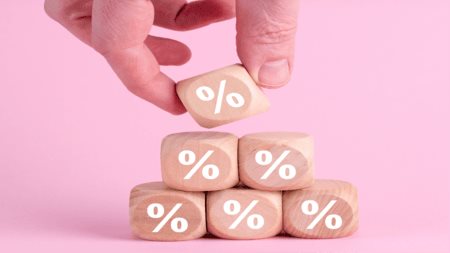A basic understanding of interest rates and its economic influences is essential when applying for a home loan. Here’s everything you need to know about the cost of borrowing to pay for a home.
Interest rates affect most people and the financial decisions they make. Very few of us are able to make large purchases without the assistance of a bank that is willing to lend us capital. This is especially so, when buying a home, purchasing a car or having to make an unexpected large payment.
In the case of purchasing a home, one of the key considerations for many who require a home loan is the rate of interest they will be charged.
Securing the lowest interest rate possible is an essential factor for many as it determines the amount that needs to be paid back. For this reason, it is essential for all borrowers to understand the basics of interest rates and the role it plays in your decision to borrow money.
Interest rates defined:
In simple terms, interest rates refer to the cost of borrowing money. When a bank lends you money, they charge you a percentage of that loan, which is payable monthly.
This percentage is the interest rate – a term that represents the individual rates charged in the lending and borrowing process. There are various types of interest rates that exist, all of which are expressed as an annual percentage rate (APR) of the total amount borrowed.
South African Reserve Bank (SARB):
The main type of interest is the national interest rate which is determined and controlled by the country’s central bank, known as the South African Reserve Bank (SARB).
SARB is regarded as the most important financial institution and its control over the national interest rate has a direct effect on the repo rate.
What are repo rates?
The repo rate, also known as the repurchase rate, is a term used to describe the rate at which SARB lends money to South Africa’s private banks, such as Standard Bank, ABSA, Nedbank and First National Bank.
An increase in the repo rate results in an increase in the bank’s prime lending rate which has a huge effect on anyone who has taken a loan and is owing the bank money. This is because the amount of interest that they are required to pay over and above their loan repayment also increases.
What are prime lending rates?
Banks add additional interest onto the repo rate in order to create the prime lending rate which is the cost at which they are willing to loan money to the public.
The prime lending rate is determined by the repo rate which again, fluctuates in accordance to the national interest rate. If banks have to pay more to borrow, they raise the prime lending rate. If their cost of borrowing money from SARB drops, then their prime lending rate decreases accordingly.
Why do South Africa’s interest rates change?
Interest rates fluctuate in accordance to the supply and demand for funds.
Should the demand for funds be high and the supply of funds low, the interest rate will be higher in comparison to when the demand for funds is low and available supply is high.
Interest rates constantly change in order to manage inflation and/or to reduce the supply of money in the economy.
Having a large supply of money generally enables more personal spending. Individuals also have a better chance of attaining bank loans which, as a result increases consumer debt and has negative repercussions for the economy.
For this reason, it is imperative that SARB works towards maintaining a healthy economy by adjusting the interest rate accordingly in order to control the flow of capital in the economy.
An increase in the interest rate means an increase in the cost of borrowing, which essentially makes a person’s debt cost more. As a result, individuals are likely to spend less due to the additional amount of pressure added to their budget.
Fluctuating interest rates are essentially a way to protect the overall financial well-being of the country.
Types of home loans:
Every home loan has two parts: principal and interest. The principal is the amount you borrow, and the interest is what you pay in order to borrow the money.
Different types of home loans offer choices on how to structure your interest payments in order to meet your specific financial needs.
Home loan interest rate options:
• Fixed rate:
Choosing a fixed interest rate is an option that home loan applicants can choose to set a specified interest rate for a stipulated period of time, which will remain the same regardless of prevailing economic conditions.
Advantages:
The benefit of choosing this type of option is that, even if interest rates rise, yours won’t, and you will continue to pay the same instalment every month.
This also means you can budget more effectively. However, once the set chosen period expires, your interest rate will automatically revert to the standard option until a new fixed term period is requested.
Disadvantages:
The downside to a fixed interest rate is that it may be costlier in the long run. Banks have to hedge their own risk by allowing individuals to fix their rate, which is why a fixed rate is always higher than the variable rate.
Clients are also locked in for the full term of the contract. This means, should the interest rate come down during your fixed term period, you could lose out on the benefit of paying a much lower interest rate.
• Variable interest rate:
A variable interest rate is the standard interest rate option. When you enter into a home loan agreement with a bank or mortgage lender, you pay the bank according to a variable interest rate which varies in line with movements of the prime lending rate.
When this rate changes, so does your home loan interest rate. This means that your monthly instalment for your home loan will also change, either decreasing or increasing depending on which way the interest rates go.
Advantages:
The benefit of this option is that if the interest rates goes down, so will the interest rate on your home loan. This means that homeowners will be able to pay less on their repayments each month.
An additional benefit of this option is that in the event of interest rates being at risk, the ability to switch to a fixed-rate contract is always available.
Disadvantages:
The disadvantage of this option is that it ultimately effects your monthly cash flow.
Sharp increases in interest rates essentially results in an increase in your monthly home loan instalments.
For homeowners who are on a tight budget, this could become problematic and may result in you being unable to meet the higher payment required.
The interest rate that banks charge you (how its determined): For home loans in particular, the bank takes the principal sum (the amount you need to borrow) and determines the cost of your loan repayment in accordance to the current interest rate and the term period of your home loan.
What is important to note in a reducing balance calculation is the interest component of your equated monthly instalments keeps changing, from a high initial amount in the early part of your loan, to a nominal figure as the loan comes to an end.
Additional factors that determine the interest rate that banks charge:
Interest on your home loan is also calculated in accordance to the outstanding balance. For instance, if you were to deposit a lump sum of money into your home loan account; the outstanding amount on your home loan will decrease, which will in turn lower the amount of interest that you will pay on your home loan going forward.
The term period of your home loan also has an effect on the cost of borrowing. The longer the term of your home loan, the longer the term of interest payable. There are also the additional risks of extending your loan term – such as the impact of inflation, as well as the risks associated with fluctuating interest rates.
Risk is another factor taken into consideration by lenders when calculating interest rates. Most banks are often concerned about the borrower’s ability to repay a loan. In the event of a borrower having a higher risk of default or a poor credit rating, the interest rate is then increased accordingly.
Inflation also plays a role in determining the interest rate that banks charge. If inflation is expected to be high, the buying power of borrowed funds declines rapidly. In the event of expected inflation, banks demand a higher interest rate in order to financially protect themselves against the negative repercussions of inflation.
Although homeowners do not have control over which way the interest rates go, they do however have control over the choices they make when deciding to borrow or invest money.
It is essential for home owners to conduct sufficient research and speak to a professional financial consultant before borrowing from the bank, to ensure that the interest rate they will be charged will work in their favour.




